Stokstad Key Monuments Chapter 1
1/6
There's no tags or description
Looks like no tags are added yet.
Name | Mastery | Learn | Test | Matching | Spaced |
|---|
No study sessions yet.
7 Terms
1-1 Spotted Horses and Human Hands
c. 25,000 BCE
on the wall of a chamber in Pech-Merle Cave (France)
tapering of horses head follows the shape of the rock
at a later date a large red fish was painted on top of the spots
painters left their handprints around the animal as signatures
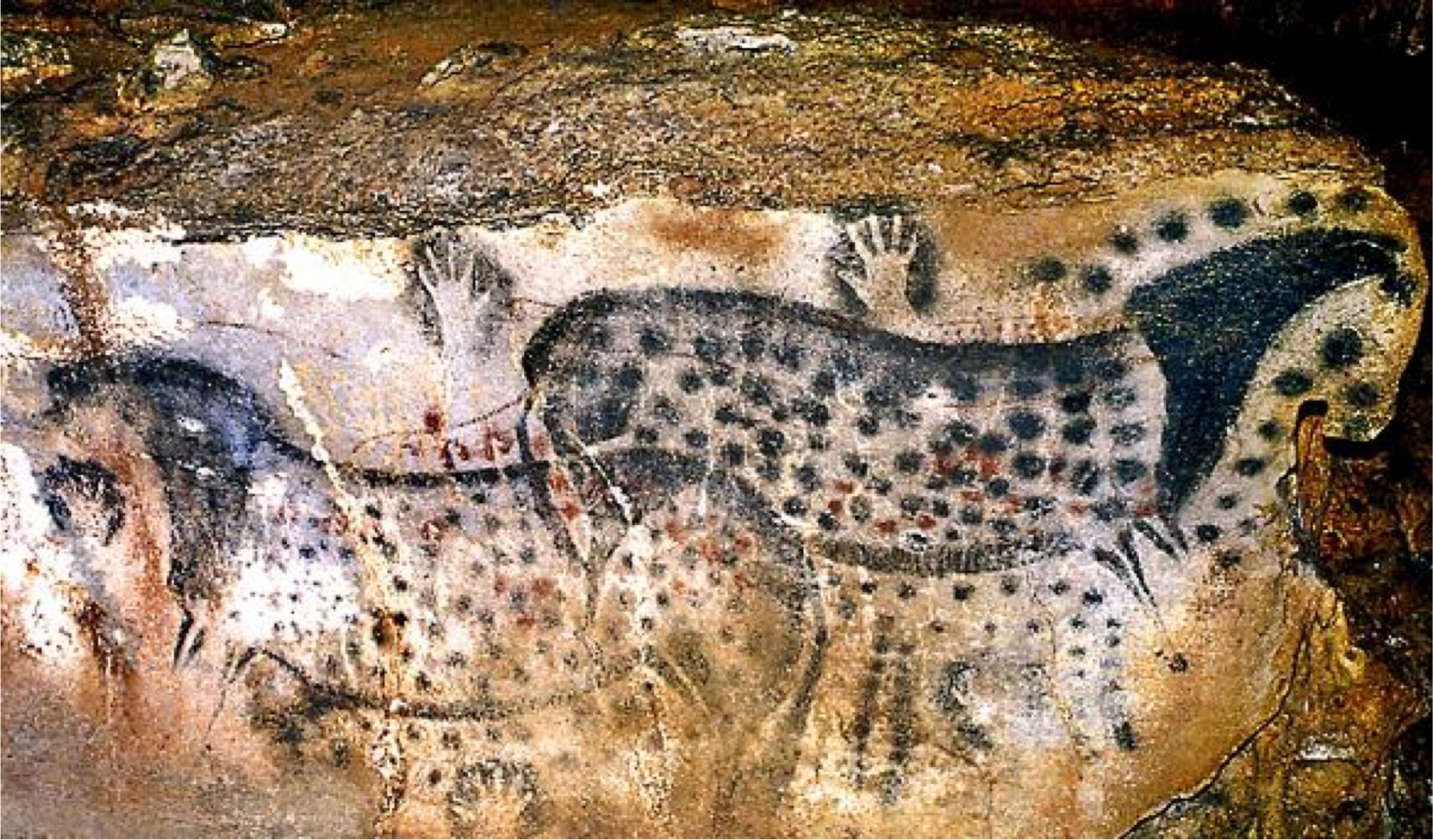
1-6 Lion Human
40,000-35,000 BCE
Germany
male human figure w/ feline head- carved out of mammoth tusk
could have been someone in a ritual lion mask or someone who had taken the appearance of a animal (shamanism)
humans might have seen animals and humans as sharing the world as one common group
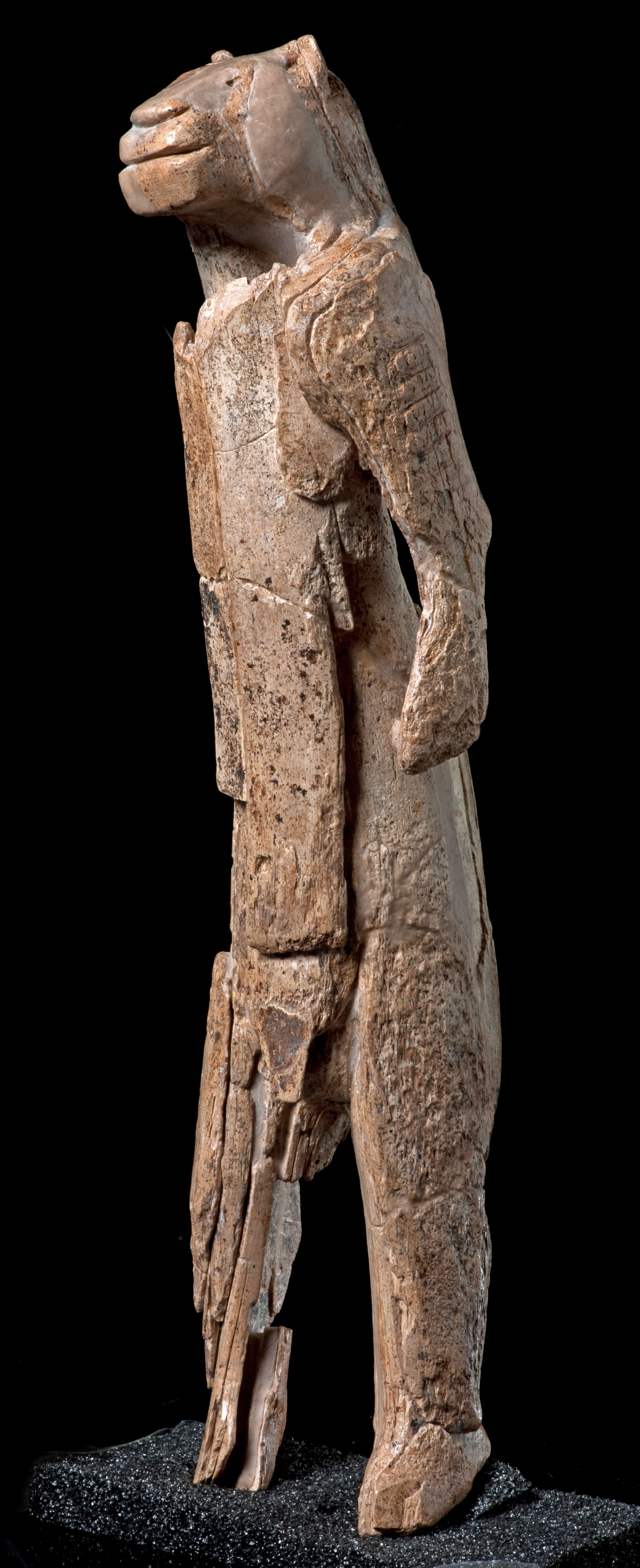
1-7 Woman from Willendorf
~24,000 BCE
Austria
carved from limestone and painted with red ocher
exaggerated form and female attributes
could be expressing health and fertility
female statues (most human figurines from the Upper Paleolithic are female) may have been a signature object that signaled whether a group was friendly (for mating)
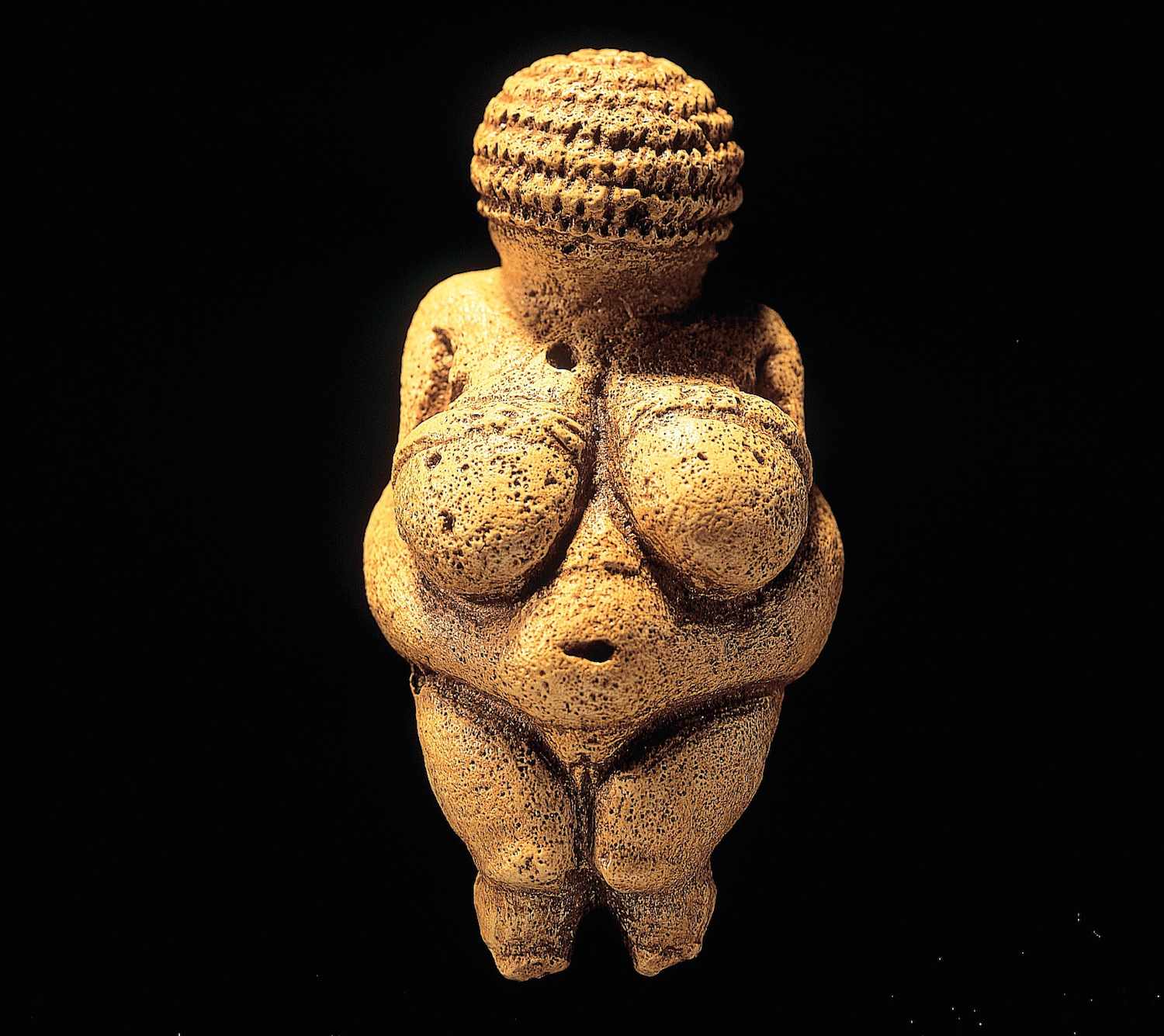
1-9 Woman’s Head from Brassempouy
30,000 BCE
France
captures the essence of a head (memory image)
abstraction
we lose original cultural context
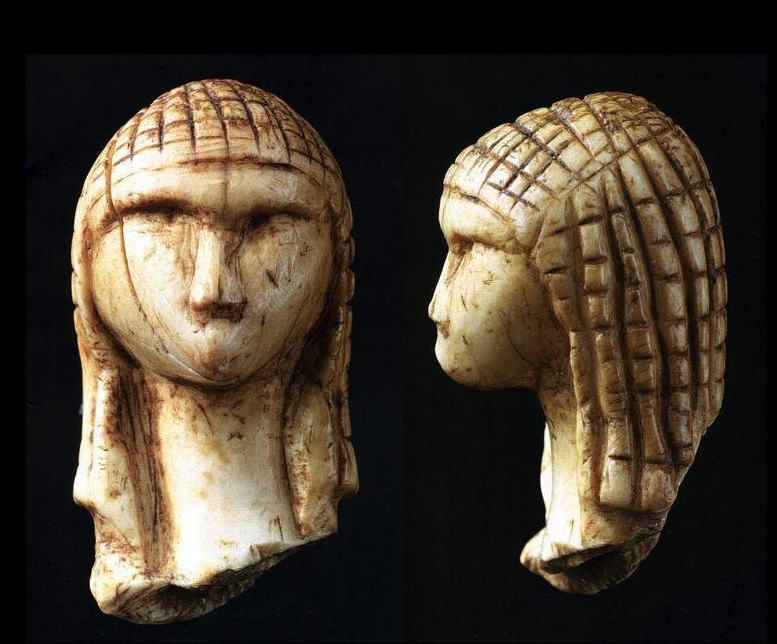
1-12 Lascaux, Bird-Headed Man w/Bison and Rhino
~15,000 BCE
Lascaux, Southwest France (abundant cave paintings)
this painting located in a remote setting (bottom of 16ft shaft)
stylistically different from other paintings- tells a story (narrative)
figure (hunter) with the head of a bird or wearing a bird mask lying down w/ bison looming over
Bison disemboweled with a spear; staff with a bird; wholly rhino runs off
myth, actual event, shaman?
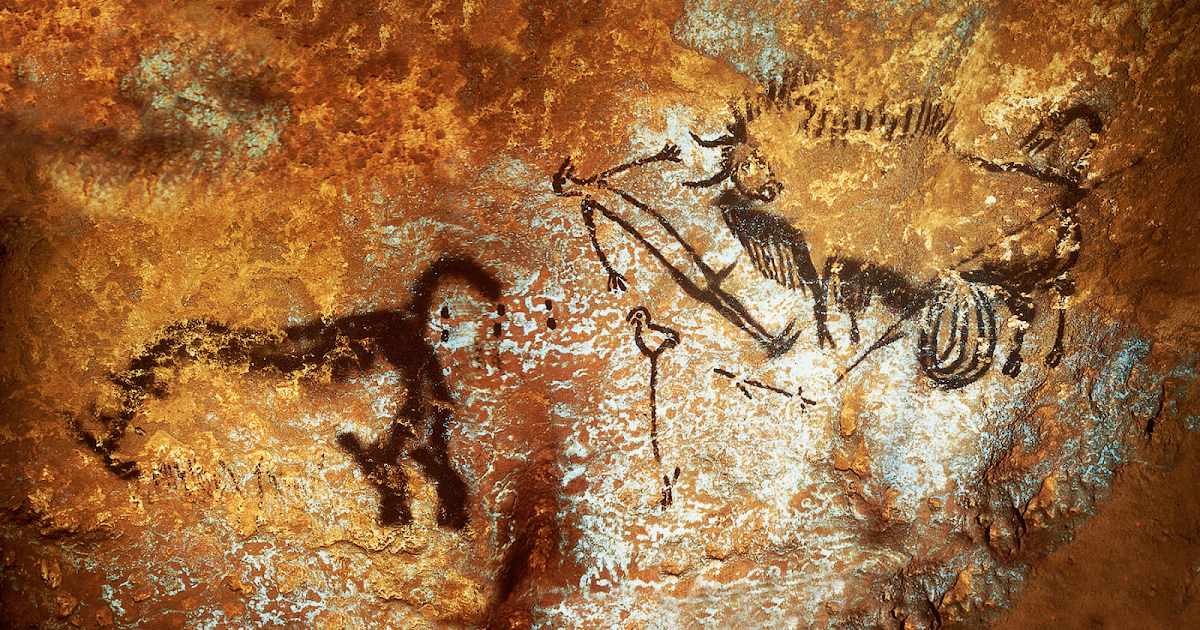
p15 Closer Look at Catalhoyuk
~7,400 BC (Early Neolithic Period)
Central Turkey
made of rectangular mud bricks held together w/mortar and covered in plaster
houses were an emblem of the spirit and history of the community
art decorated interiors with violent and wild scenes painted on walls
scenes highlight the dangerous interactions b/w people and animals
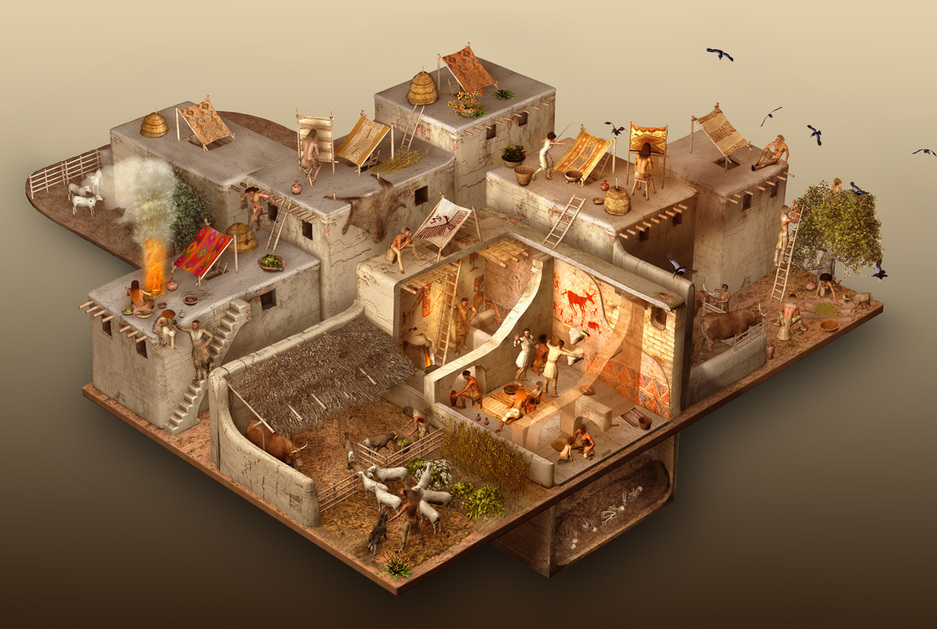
1-21,22 Stonehenge
8 phases of construction- starting in 3000 BC
Different types of stones used for different phases
blue stone (from 150 miles away) in early phases = powerful connection to homeland
site for ceremonies linked to death and burial